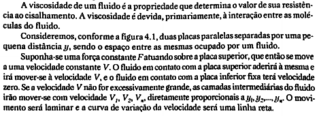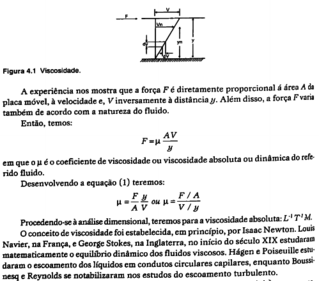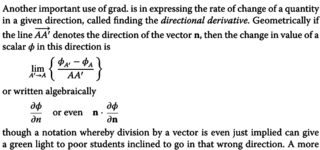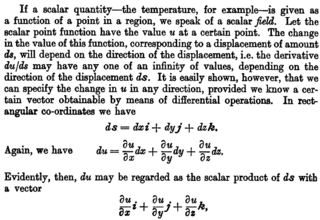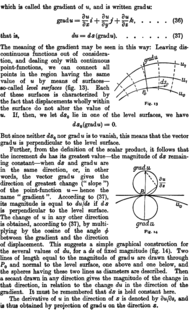Edited, memorised or added to reading queue
on 16-Apr-2021 (Fri)
Do you want BuboFlash to help you learning these things? Click here to log in or create user.
Flashcard 6217698512140
| status | not learned | measured difficulty | 37% [default] | last interval [days] | |||
|---|---|---|---|---|---|---|---|
| repetition number in this series | 0 | memorised on | scheduled repetition | ||||
| scheduled repetition interval | last repetition or drill |
Flashcard 6326043151628
| status | not learned | measured difficulty | 37% [default] | last interval [days] | |||
|---|---|---|---|---|---|---|---|
| repetition number in this series | 0 | memorised on | scheduled repetition | ||||
| scheduled repetition interval | last repetition or drill |
Flashcard 6326058618124
| status | not learned | measured difficulty | 37% [default] | last interval [days] | |||
|---|---|---|---|---|---|---|---|
| repetition number in this series | 0 | memorised on | scheduled repetition | ||||
| scheduled repetition interval | last repetition or drill |
Flashcard 6326517107980
| status | not learned | measured difficulty | 37% [default] | last interval [days] | |||
|---|---|---|---|---|---|---|---|
| repetition number in this series | 0 | memorised on | scheduled repetition | ||||
| scheduled repetition interval | last repetition or drill |
| status | not read | reprioritisations | ||
|---|---|---|---|---|
| last reprioritisation on | suggested re-reading day | |||
| started reading on | finished reading on |
Single transferable vote - Wikipedia
voting Random selection (sortition, random ballot) Comparison of electoral systems Social choice theory Arrow's theorem Gibbard–Satterthwaite theorem Public choice theory Politics portal v t e <span>The single transferable vote (STV) is a voting system designed to achieve or closely approach proportional representation through the use of multiple-member constituencies and each voter casting a single ballot on which candidates are ranked. The preferential (ranked) balloting allows transfer of votes to produce proportionality, to form consensus behind select candidates and to avoid the waste of votes prevalent under other voting systems.[1] Another name for STV is multi-winner ranked-choice voting.[2] Under STV, each elector (voter) casts a single vote in a district election that elects multiple winners. Each elector marks their ballot for the most preferred candidate and also marks
| status | not read | reprioritisations | ||
|---|---|---|---|---|
| last reprioritisation on | suggested re-reading day | |||
| started reading on | finished reading on |
Single transferable vote - Wikipedia
r other voting systems.[1] Another name for STV is multi-winner ranked-choice voting.[2] Under STV, each elector (voter) casts a single vote in a district election that elects multiple winners. <span>Each elector marks their ballot for the most preferred candidate and also marks back-up preferences. A vote goes to the voter's first preference if possible, but if the first preference is eliminated, instead of being thrown away, the vote is transferred to a back-up preference, with the vote being assigned to the voter's second, third, or lower choice if possible (or under some systems being apportioned fractionally to different candidates). Where there are more candidates than seats, the least popular is eliminated and their votes transferred based on voters' marked back-up preferences. In some systems surplus votes not ne
| status | not read | reprioritisations | ||
|---|---|---|---|---|
| last reprioritisation on | suggested re-reading day | |||
| started reading on | finished reading on |
Single transferable vote - Wikipedia
can take all the seats in a district. The key to STV's achievement of proportionality is that each elector (voter) only casts one single vote, in a district election electing multiple winners. <span>Under STV, district elections grow more proportionally representative in direct relation to increase in the number of seats to be elected in a constituency – the more seats, the more the distribution of the seats in a district will be proportional. For example, in a three-seat STV election using the Hare Quota of ( valid votes cast ) / ( seats to fill ) {\displaystyle ({\rm {\mbox{valid votes cast}}})/({\rm {\mbox{seats to fill}}})} , a candidate or party needs 33 percent of the votes to win a seat. In a seven-seat STV district, any candidate who can get the support of approximately 14 percent of the vote (either first preferences alone or a combination of first preferences and lower-ranked preferences transferred from other candidates) will win a seat. Instant runoff voting (IRV) is the single-winner analogue of STV. It is also called single-winner ranked-choice voting. Its goal is representation of a majority of the voters in a distr
| status | not read | reprioritisations | ||
|---|---|---|---|---|
| last reprioritisation on | suggested re-reading day | |||
| started reading on | finished reading on |
Single transferable vote - Wikipedia
e those cast for unsuccessful candidates and for successful candidates over and above those needed to secure a seat. STV avoids this waste by transferring a vote to another preferred candidate. <span>STV also provides approximately proportional representation, ensuring that substantial minority factions have some representation. No one party or voting block can take all the seats in a district. The key to STV's achievement of proportionality is that each elector (voter) only casts one single vote, in a district election electing multiple winners. Under STV, district elections grow more proportionally representative in direct relation to increase in the number of seats to be elected in a constituency – the more seats, the more th
| status | not read | reprioritisations | ||
|---|---|---|---|---|
| last reprioritisation on | suggested re-reading day | |||
| started reading on | finished reading on |
Single transferable vote - Wikipedia
d to a back-up preference, with the vote being assigned to the voter's second, third, or lower choice if possible (or under some systems being apportioned fractionally to different candidates). <span>Where there are more candidates than seats, the least popular is eliminated and their votes transferred based on voters' marked back-up preferences. In some systems surplus votes not needed by successful candidates are transferred proportionally, as described below. Elections and/or eliminations, and vote transfers where applicable,
| status | not read | reprioritisations | ||
|---|---|---|---|---|
| last reprioritisation on | suggested re-reading day | |||
| started reading on | finished reading on |
Proportional representation - Wikipedia
d or eliminated, surplus or discarded votes that would otherwise be wasted are transferred to other candidates in order or preferences, forming consensus groups that elect surviving candidates. <span>STV enables voters to vote across party lines, to choose the most preferred of a party's candidates and vote for independent candidates, knowing that if the candidate is not elected their vote will likely not be wasted. Mixed member PR (MMP), also called the additional member system (AMS), is a two-tier mixed electoral system, combining local non-proportional plurality/majoritarian elections and a comp
| status | not read | reprioritisations | ||
|---|---|---|---|---|
| last reprioritisation on | suggested re-reading day | |||
| started reading on | finished reading on |
Proportional representation - Wikipedia
o indicate preferences for individual candidates during the elections. With Single transferable vote, voters can rank individual candidates, rather than just vote for a single "best" candidate. <span>During the count, as candidates are elected or eliminated, surplus or discarded votes that would otherwise be wasted are transferred to other candidates in order or preferences, forming consensus groups that elect surviving candidates. STV enables voters to vote across party lines, to choose the most preferred of a party's candidates an
| status | not read | reprioritisations | ||
|---|---|---|---|---|
| last reprioritisation on | suggested re-reading day | |||
| started reading on | finished reading on |
Proportional representation - Wikipedia
voting Random selection (sortition, random ballot) Comparison of electoral systems Social choice theory Arrow's theorem Gibbard–Satterthwaite theorem Public choice theory Politics portal v t e <span>Proportional representation (PR) characterizes electoral systems in which divisions in an electorate are reflected proportionately in the elected body.[1] The concept applies mainly to geographical, and to ideological partitioning of the electorate. For instance at the European parliament each member state has a number of seats that is (roughly) proportional to its population (an instance of geographical representation). The same
Flashcard 6329054924044
| status | not learned | measured difficulty | 37% [default] | last interval [days] | |||
|---|---|---|---|---|---|---|---|
| repetition number in this series | 0 | memorised on | scheduled repetition | ||||
| scheduled repetition interval | last repetition or drill |
LUBRIFICAÇÃO - GRAXAS - Casa dos Lubrificantes -
anual da impressora offset GTO do laboratório. Possuem grande estabilidade mecânica e alto ponto de gota, sendo de fácil aplicação por meio de pistolas e sistemas centralizados de lubrificação; <span>- Graxas à base de sabão Complexo: Sabão complexo é aquele, em que a fibra do sabão é formada pela cristalização de um sabão normal (Cálcio, Sódio, Alumínio ou Lítio) e um agente complexo, como: ácido acético, lático, etc. Esse tipo de graxa apresenta como característica principal um elevado ponto de gota. Principais características das graxas: - Consistência; - Ponto de gota; - Bombeamento; Consistência: É a resistência oferecida por uma graxa à sua penetração. É determinada pelo método
anual da impressora offset GTO do laboratório. Possuem grande estabilidade mecânica e alto ponto de gota, sendo de fácil aplicação por meio de pistolas e sistemas centralizados de lubrificação; <span>- Graxas à base de sabão Complexo: Sabão complexo é aquele, em que a fibra do sabão é formada pela cristalização de um sabão normal (Cálcio, Sódio, Alumínio ou Lítio) e um agente complexo, como: ácido acético, lático, etc. Esse tipo de graxa apresenta como característica principal um elevado ponto de gota. Principais características das graxas: - Consistência; - Ponto de gota; - Bombeamento; Consistência: É a resistência oferecida por uma graxa à sua penetração. É determinada pelo método
Flashcard 6329527045388
| status | not learned | measured difficulty | 37% [default] | last interval [days] | |||
|---|---|---|---|---|---|---|---|
| repetition number in this series | 0 | memorised on | scheduled repetition | ||||
| scheduled repetition interval | last repetition or drill |
Flashcard 6332640529676
| status | not learned | measured difficulty | 37% [default] | last interval [days] | |||
|---|---|---|---|---|---|---|---|
| repetition number in this series | 0 | memorised on | scheduled repetition | ||||
| scheduled repetition interval | last repetition or drill |
Flashcard 6334201859340
| status | not learned | measured difficulty | 37% [default] | last interval [days] | |||
|---|---|---|---|---|---|---|---|
| repetition number in this series | 0 | memorised on | scheduled repetition | ||||
| scheduled repetition interval | last repetition or drill |
